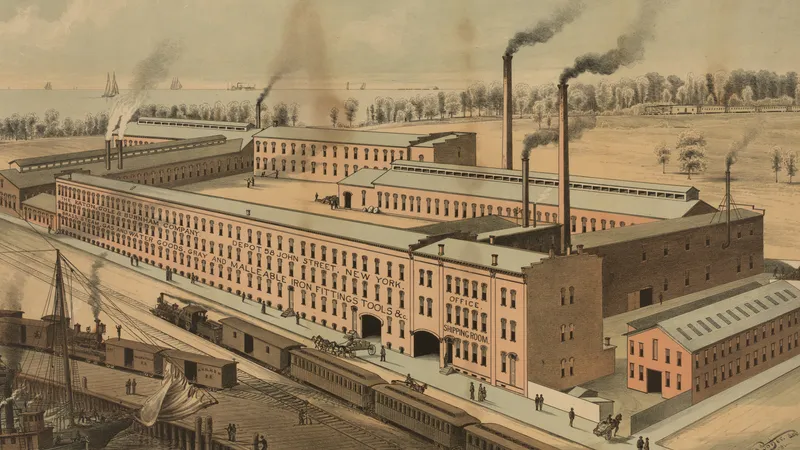A Comprehensive Guide to Categorizing Your Hinduism Blog: A to Z
A Comprehensive Guide to Categorizing Your Hinduism Blog: A to Z Starting a blog on Hinduism offers a vast canvas to explore one of the world’s oldest and most complex religions. Categorizing your content effectively is crucial for both engaging your readers and providing them with a structured learning experience. This article will guide you through the A to Z of creating comprehensive categories for your Hinduism blog, ensuring that you cover every aspect from ancient scriptures to modern interpretations. A: Ancient Scriptures and Texts Overview: This category serves as the foundation of your blog, covering the sacred texts that have shaped Hinduism over millennia. B: Bhakti (Devotion) and Worship Practices Overview: Bhakti, or devotion, is a central aspect of Hindu spirituality, and this category can explore various forms of devotional practices. C: Culture and Festivals Overview: Hinduism is deeply intertwined with Indian culture, and this category can highlight the various festivals, customs, and traditions that enrich Hindu life. D: Dharma and Ethics Overview: Dharma, or righteous duty, is a core concept in Hinduism, and this category can explore its various dimensions. E: Environmentalism and Hinduism Overview: Hinduism has long recognized the sacredness of nature, and this category can explore its environmental teachings and practices. F: Festivals and Rituals Overview: Hinduism’s vibrant festival calendar offers endless content possibilities, from the well-known to the lesser-known celebrations. G: Gods and Goddesses Overview: Hinduism’s pantheon is vast and diverse, and this category can provide detailed profiles of the major and minor deities. H: History of Hinduism Overview: Understanding the historical development of Hinduism is crucial for appreciating its diversity and resilience. I: Interfaith Dialogue Overview: In a globalized world, interfaith understanding is more important than ever, and this category can explore Hinduism’s interactions with other religions. J: Jnana (Knowledge) and Wisdom Traditions Overview: Jnana Yoga, or the path of knowledge, is one of the key spiritual paths in Hinduism, and this category can explore the various wisdom traditions. K: Karma Yoga **Overview **: Karma Yoga, or the path of selfless action, is a key aspect of Hindu practice, and this category can explore its teachings and applications. L: Legends and Myths Overview: Hinduism’s rich tapestry of myths and legends offers endless content opportunities, and this category can bring these stories to life. M: Meditation and Mindfulness Overview: Meditation is a cornerstone of Hindu spiritual practice, and this category can guide readers on various techniques and philosophies. N: Non-Dualism (Advaita) Overview: Non-dualism, or Advaita Vedanta, is one of the most profound and influential philosophical systems in Hinduism, and this category can explore its teachings and implications. O: Om and Sacred Symbols Overview: Hinduism is rich in sacred symbols, each carrying deep spiritual significance, and this category can explore their meanings and uses. P: Pilgrimages and Sacred Geography Overview: Hinduism’s sacred geography offers a rich tapestry of pilgrimage sites, each with its unique spiritual significance, and this category can guide readers on these sacred journeys. Q: Quest for Knowledge Overview: The pursuit of knowledge (Jnana) is central to Hindu spirituality, and this category can focus on how this quest shapes Hindu practices and beliefs. R: Rituals and Practices Overview: Hindu rituals and practices form the backbone of religious life, and this category can explore their various forms and significance. S: Spiritual Leaders and Saints Overview: Hinduism has produced a vast number of saints, sages, and spiritual leaders whose teachings continue to inspire millions, and this category can highlight their lives and legacies. T: Temples and Sacred Architecture Overview: Hindu temples are not just places of worship but are also masterpieces of art and architecture, and this category can explore their spiritual and cultural significance. U: Upanishads and Vedanta Overview: The Upanishads are the philosophical core of Hinduism, and this category can delve into their teachings and the Vedanta philosophy they gave rise to. V: Values and Ethics in Hinduism Overview: Hinduism places a strong emphasis on ethical living and moral values, and this category can explore these principles and how they are applied in daily life. W: Worship and Devotional Practices Overview: Worship in Hinduism is diverse, encompassing rituals, prayers, and devotional practices that connect the devotee with the divine, and this category can explore these practices in depth. X: X-Factor of Hinduism Overview: What makes Hinduism unique among the world’s religions? This category can explore the distinctive features that set Hinduism apart. Y: Yoga and Spiritual Practices Overview: Yoga, one of Hinduism’s most famous exports, is much more than physical exercise; it is a comprehensive system for spiritual development, and this category can explore its deeper aspects. Z: Zen and Hinduism: Comparative Studies Overview: While Zen is primarily associated with Buddhism, its philosophy and practices share many similarities with Hinduism, and this category can explore these connections. Conclusion Creating a comprehensive categorization system for your Hinduism blog not only helps you organize your content but also guides your readers through a rich and diverse spiritual journey. By covering topics from ancient scriptures to modern interpretations, from devotional practices to philosophical explorations, you can ensure that your blog serves as a valuable resource for anyone interested in understanding Hinduism. Remember, each category offers endless possibilities for content creation, so dive deep, explore the nuances, and share the profound wisdom of Hinduism with the world.
A Comprehensive Guide to Categorizing Your Hinduism Blog: A to Z Read More »









